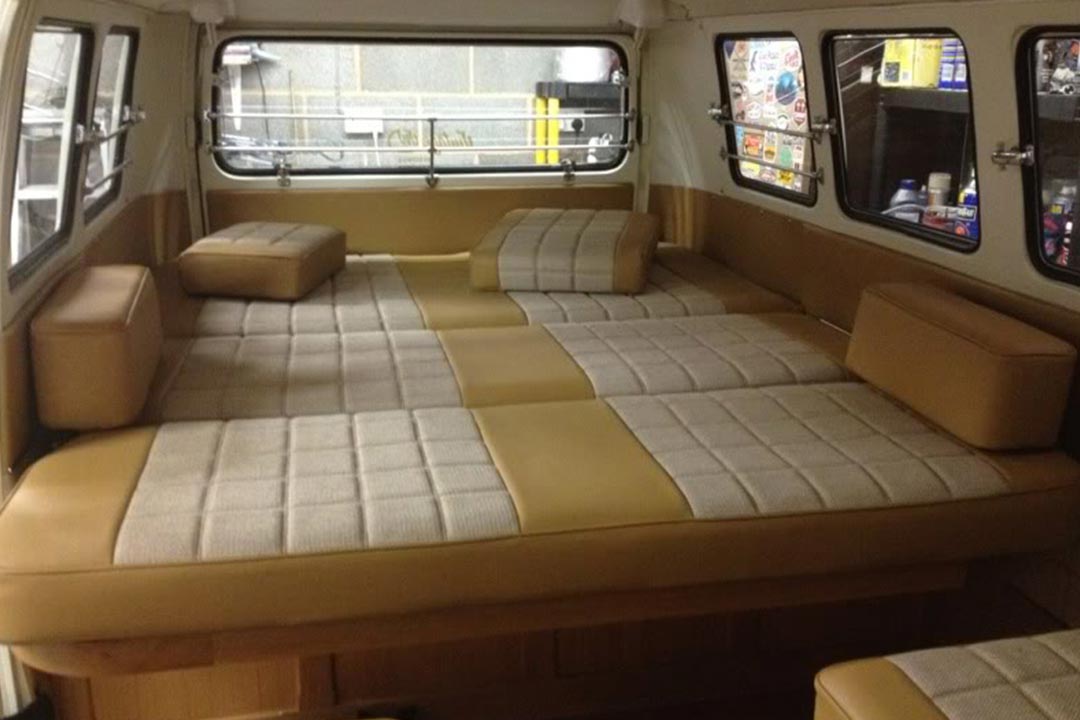
A vital piece of kit
Rock ’n’ roll beds are a vital piece of equipment for any Camper nowadays, proving the perfect compromise between sociable seating and somewhere to sleep.
Slotting one into your Split Screen or Bay Window needn’t be a chore though, especially if you start out with a product as well-considered and thought through as the trusty VW Rusty Lee bed.
Arguably, the most difficult part of the process is actually bolting the bed together and aligning the hinges in the correct orientation with the three separate inner structural sections of the seat and bed. If you’re really nice to Rusty he might even number/letter the corresponding hinges so you know what bolts to what, and which side goes where. The key is to bolt the framework together so that each area is able to fold within the next. Bolt them together in the wrong orientation and your bed just won’t fold flat at all. Having recently gone through the process ourselves, the most useful piece of advice we can give is don’t forget the washers!
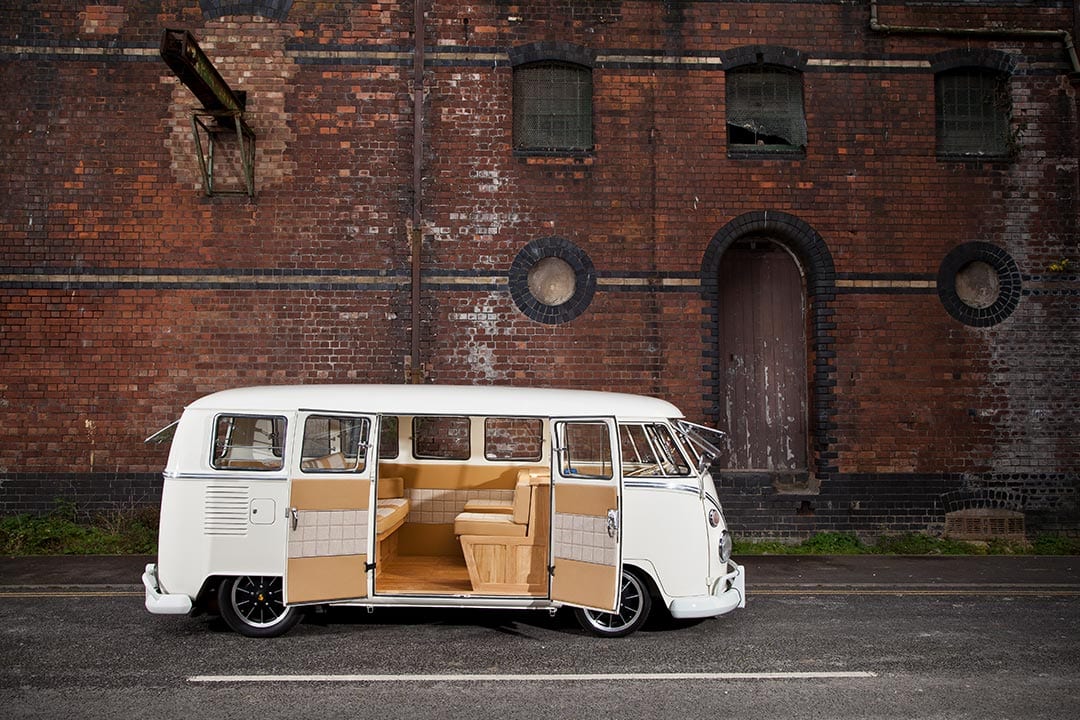
It’s all in the wrist
Apart from drilling a hole in both the wheel arches of your Bus, you only need basic hand tools, a spirit level, a pair of quick grips and a couple of hours to do the job.
With prices starting from £255 for the ¾-width bed frame (including postage), it also comes with pre-cut 9mm ply boards ready for trimming, which accept up to 4-inch foam.
Getting the bed sitting square and level against the engine cover is vital if you want to sleep like a king, or indeed a queen, so take your time and make sure you have a second pair of hands-on hands ready to help out. If you start with a lowered Bus, we’d suggest you remove your rear wheels to avoid any unfortunate mishaps with the drill.
Job Information
Tools needed
- 13 & 17mm sockets and spanners
- Drill
- Drill bit
- Spirit level
- Set square
- Jigsaw
- Cone-shaped stepped hole cutter
- Quick grips
- A friend
Materials used
- Rust inhibitor
- Primer and paint
- Rusty Lee rock ’n’roll bed
Time Taken
- 2-3 hours
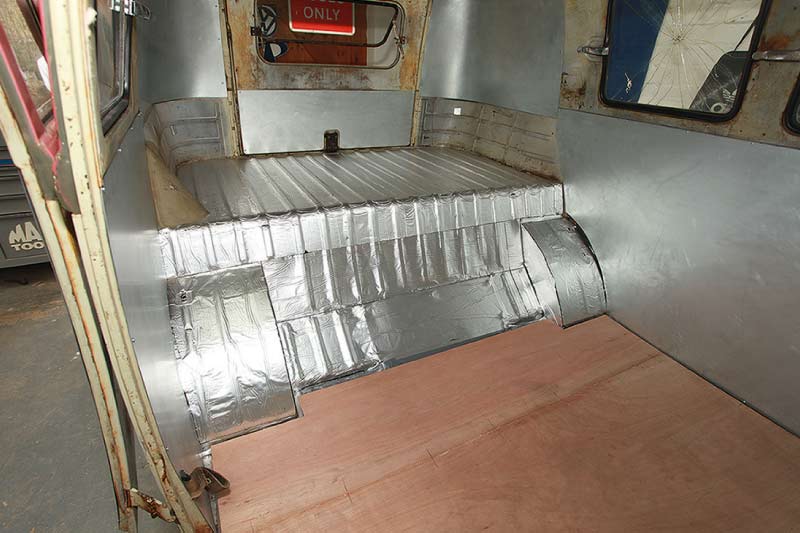
Step 01
If you haven’t done so already, the time to strip as much of your Bus’ interior out as you can because you need unrestricted access to both the rear wheelarches and the floor in the back of the Bus to do this job.
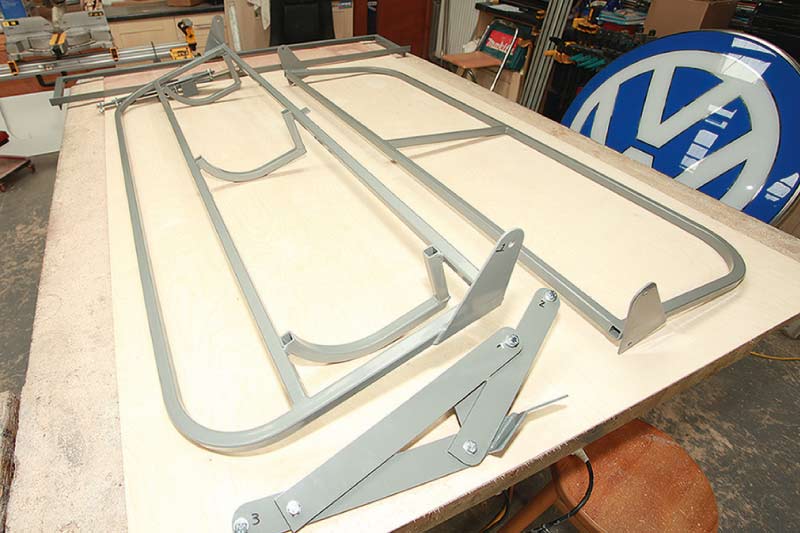
Step 02
Lay the bed sections out and acquaint yourself with the left hand and right hand-specific parts. Lee kindly writes on the bed frame and hinge sections in pen – 1, 2 and 3 on the left, A, B and C on the right. Altogether you should have five separate metal pieces to make up the bed.
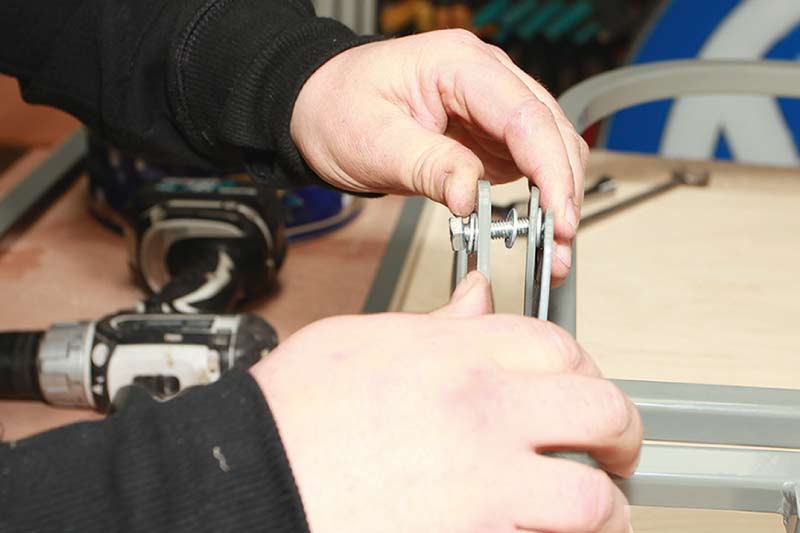
Step 03
As you’re looking at the front of the seat, slot the first pair of the M8 bolts through the hinge with markings 1 and A. Don’t forget to add the supplied washers both outside and inside the hinge as shown.
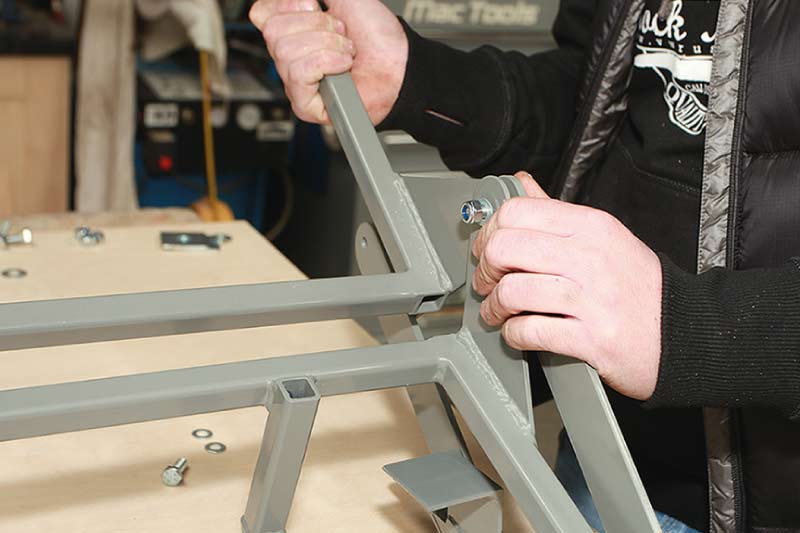
Step 04
Repeat this process on the other side and unite the hinge to the rest of the framework. Pass the bolt through the back rest fixing first, add another washer, then pass the bolt through the lower seat frame fixing and add another washer. You should end up with bolt head, washer, hinge, washer, back rest, washer, lower squab, washer, nut in that order.
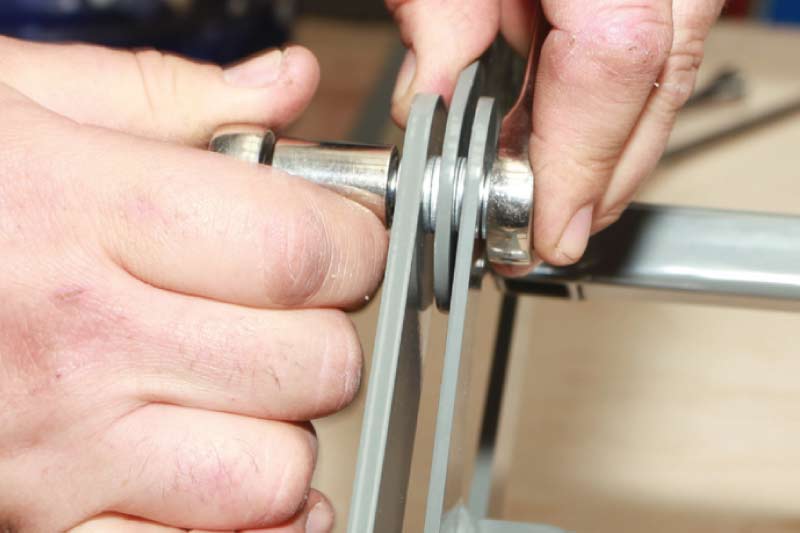
Step 05
Tighten both sides using a 13mm socket and 17mm spanner.
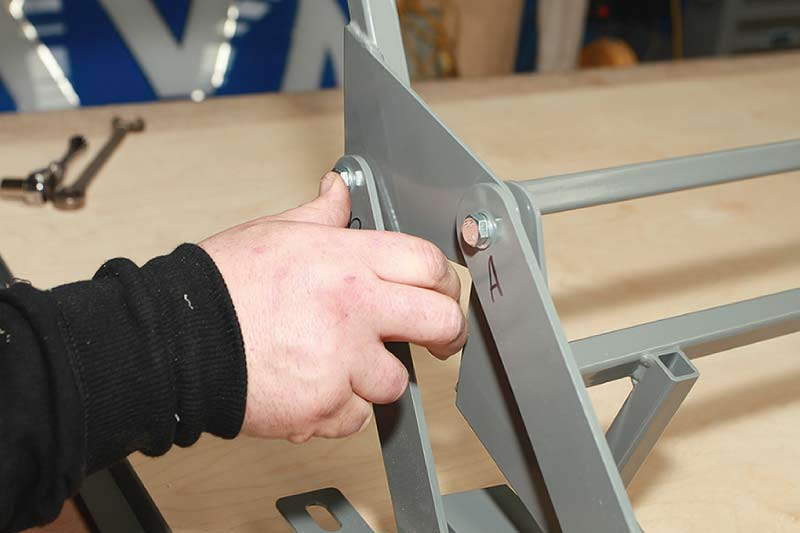
Step 06
Insert the next bolt through both section 2 and B on the left and right hinges into the back rest plate. Don’t forget those washers between any metal surfaces.
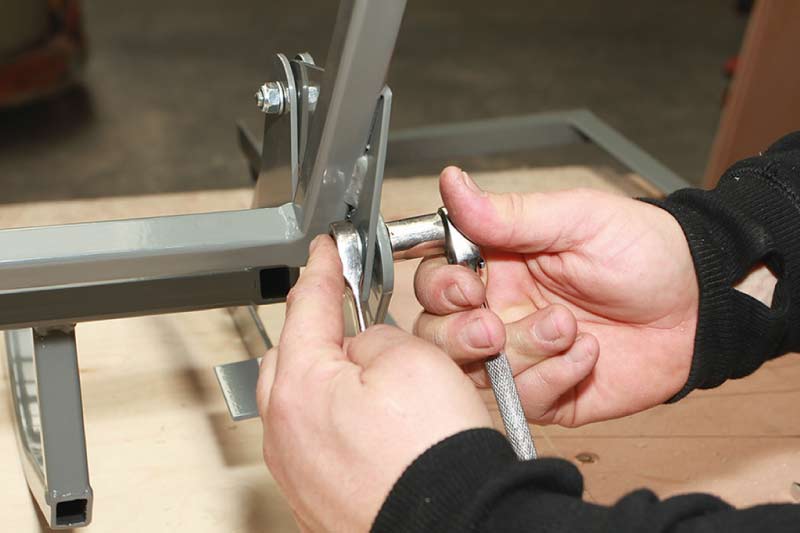
Step 07
Screw on the Nyloc and then tighten with the 13mm and 17mm socket / spanner. Repeat on both sides.
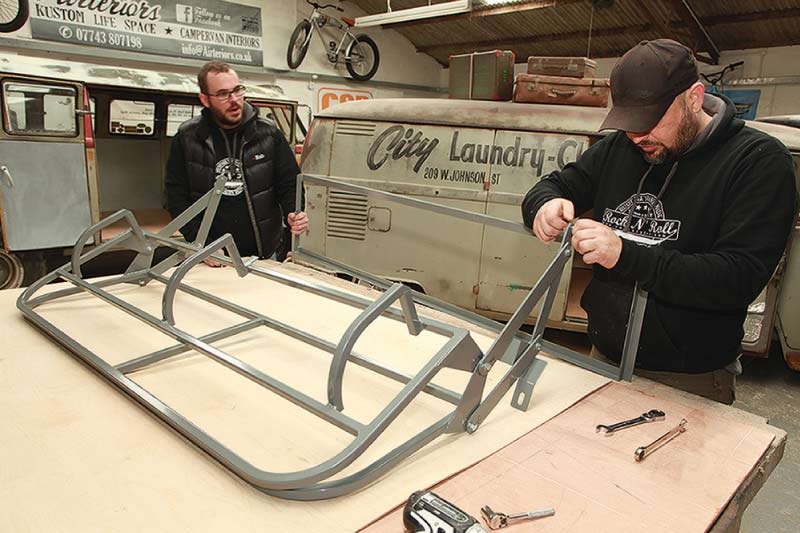
Step 08
The two hinges and both lower and rear seat frames should now be united and nipped up tight. Flip the seat over so it’s resting on its rear frame and extend the hinge so that sections 3 and C are exposed at the bottom.
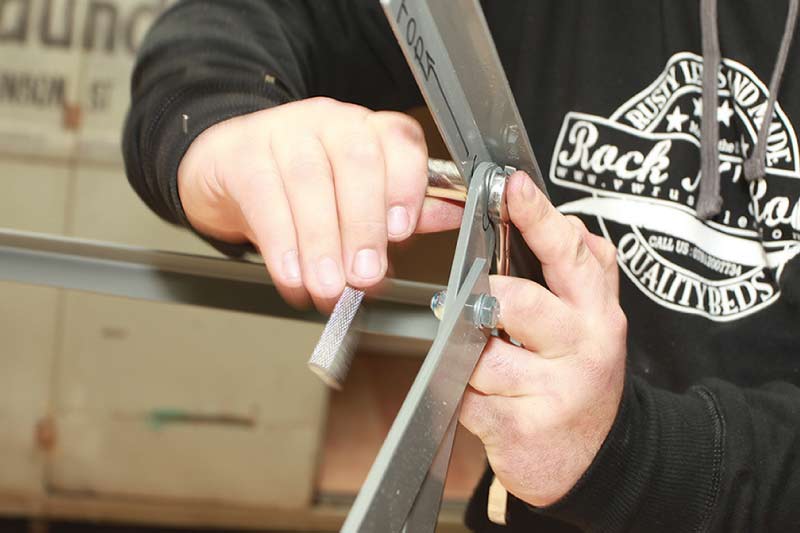
Step 09
Slide the third bolt through, again not forgetting those washers between each metal surface. Ensure the lower seat rest is pointing in the right direction. Tighten the nut and bolt using the 13mm and 17mm spanner / socket.
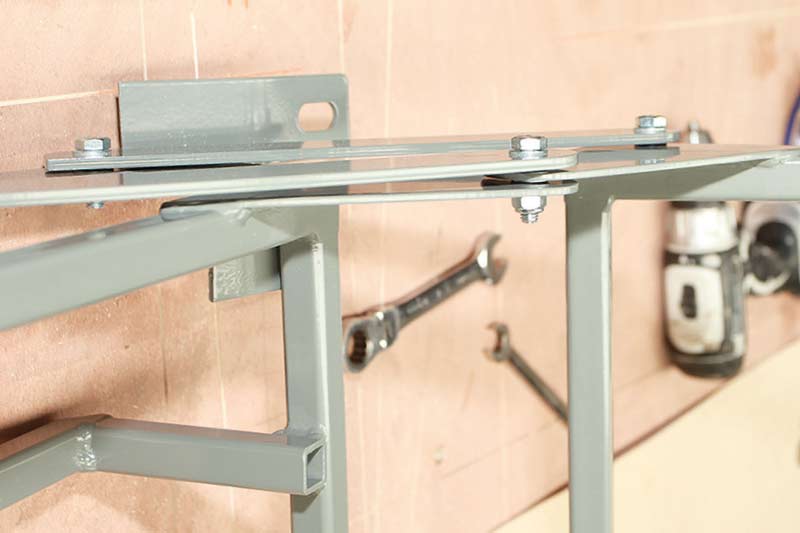
Step 10
After ensuring everything is nipped up nice and tight, stand the seat up to inspect your handiwork. You can see here how the washers are a vital part of the design as they permit enough room for the hinges to slide without interference.
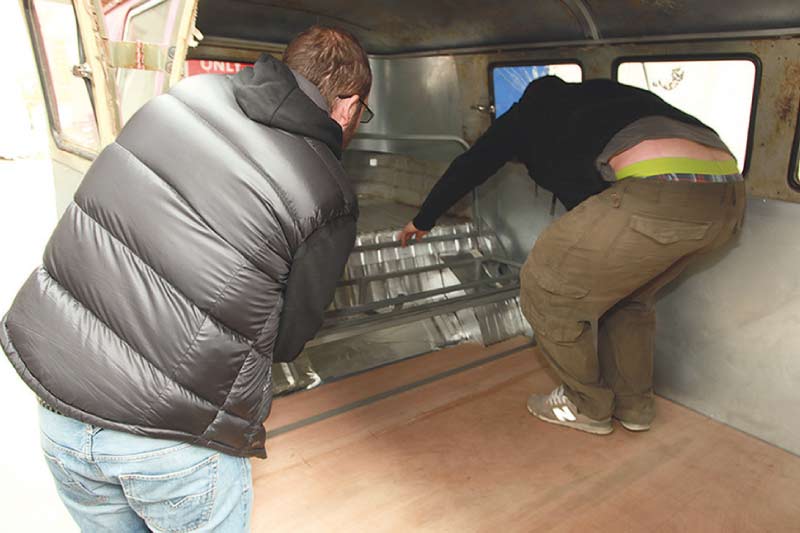
Step 11
Transfer the completed seat to your Bus. Two pairs of hands makes this step much simpler.
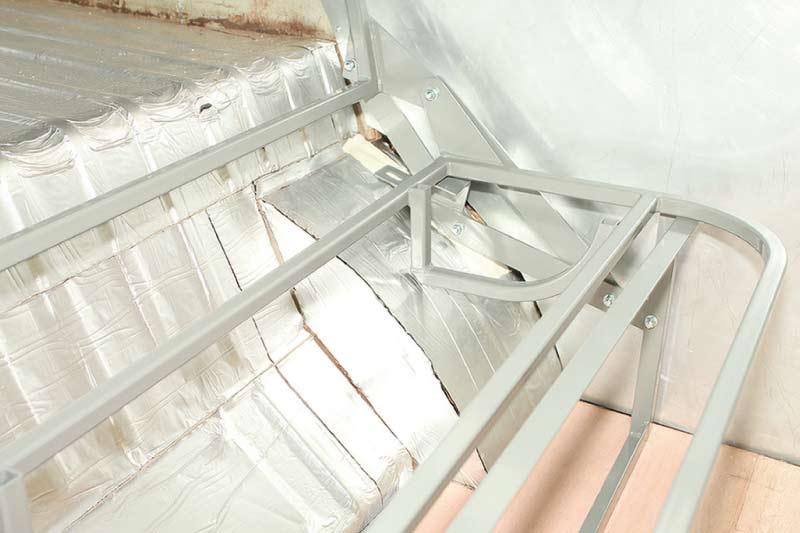
Step 12
Position the seat roughly upright so the bolt-in feet are level with the wheelarches. We used a strip of masking tape to avoid damaging the sound deadening, and also so we could mark the position of the holes to be drilled for the M10 high-tensile bolts. It should sit squarely so the ’arches support it, and obviously be central in the load space.
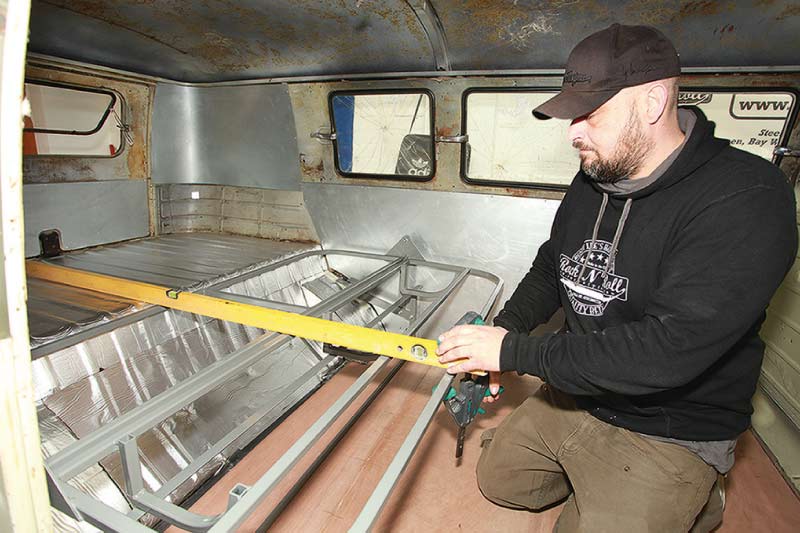
Step 13
Nick then unfolded the bed to ensure it sat straight and checked with a level. Rusty Lee’s tag line, ‘Sleep like a King’ only applies if you put the bed in straight! Quick grips ensured it remained true.
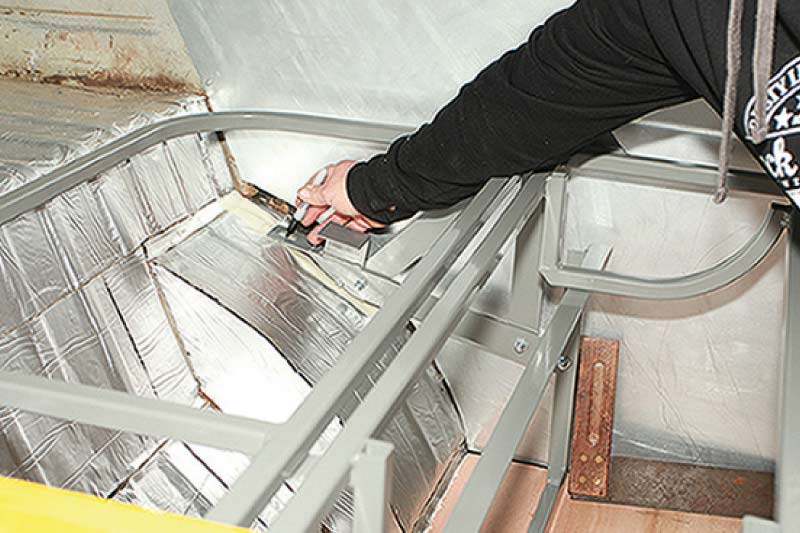
Step 14
Don’t forget to check that the lower support structure is also straight using a set square. Mark the position of the holes to be drilled through the wheelarches for the M10 bolts to drop through.
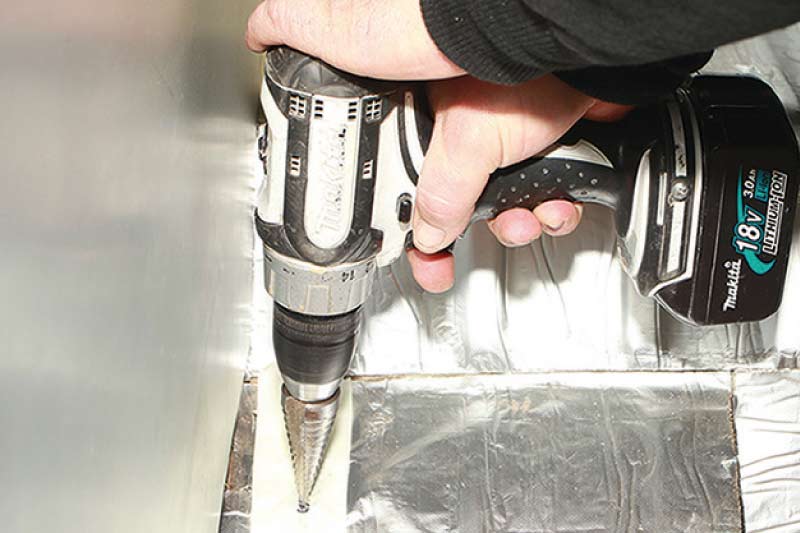
Step 15
With the positions accurately marked, bust out your best stepped hole cutting drill bit. Don’t make the holes larger than the diameter of your bolts and ensure your tyres are clear of the ’arches before you puncture them. Don’t forget to rust proof the bare metal edges of the holes with a suitable primer or rust preventative treatment.
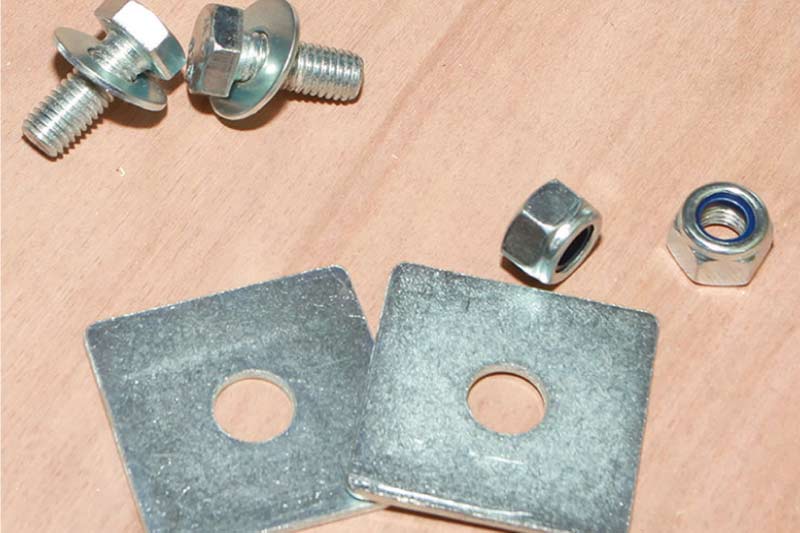
Step 16
The kit comes with the spreader plates, the high-tensile bolts and the Nylocs needed to hold the bed in place.
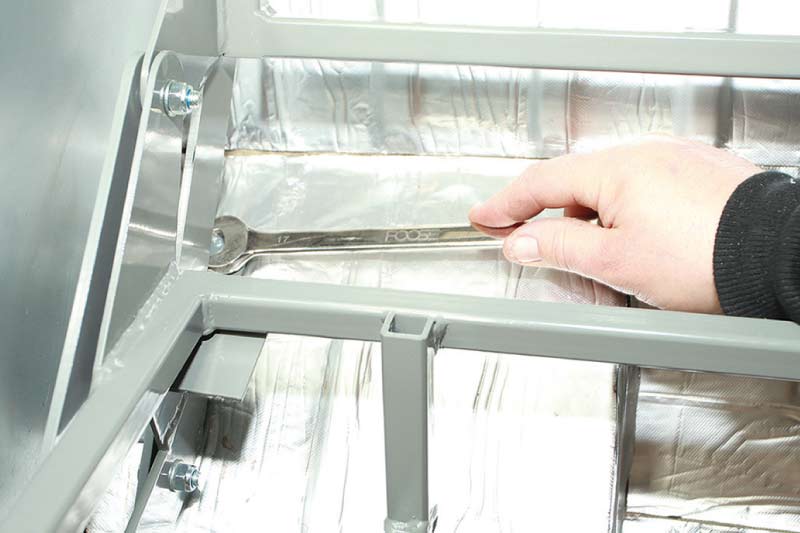
Step 17
With the help of your able assistant, wrestle the bed back into position and drop the bolts through the holes. What you can’t see here is that Lee is underneath the Van with the socket ready to nip up the Nyloc from below. Repeat for the other side.
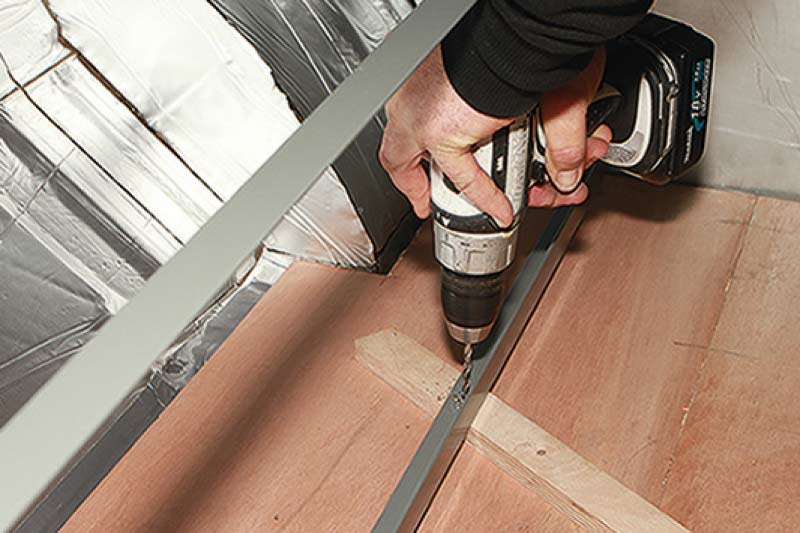
Step 18
Check once again that the lower support frame is straight and true. Using some offcuts of wood, lift the lower framework up slightly and slide the offcuts under so you can drill pilot holes for the self-tappers that will secure the frame to the ply floor. As per the instructions, fit one either side of the frame.
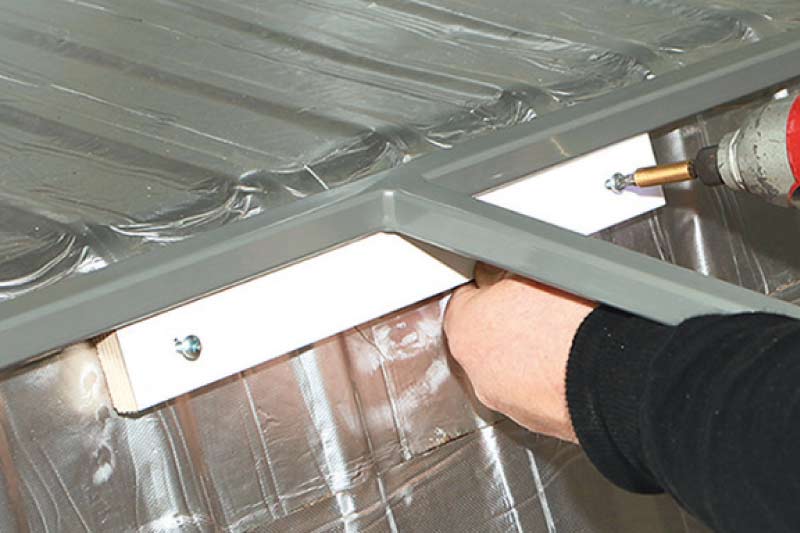
Step 19
To add some extra support to the back of the bed, Nick then made a stop out of some 50mm carcassing / sawn timber. Go very carefully here with the drill as on almost all Splits and all Bays the fuel tank sits right behind here. Ensure the screws to hold this in place are suitably short.
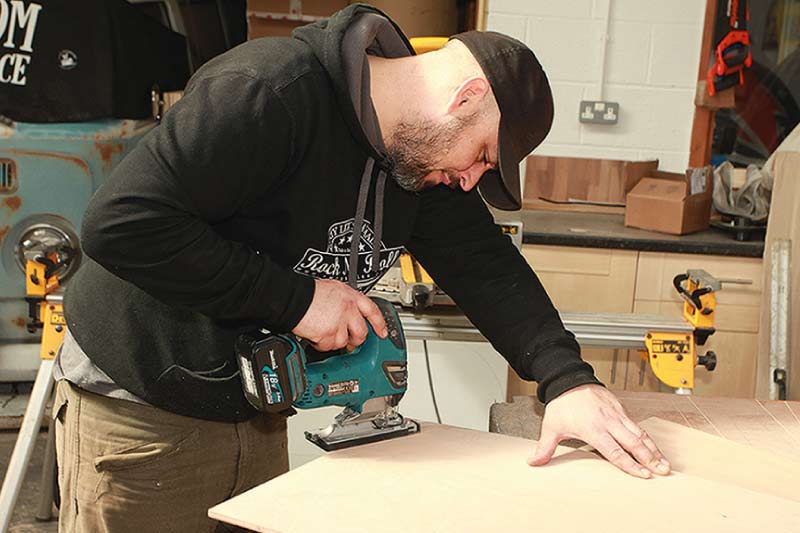
Step 20
The bed comes with two 9mm ply boards that form the base and back rest of your seat. Nick radiused the corners as shown freehand using a jigsaw. If you have never done this job before, we suggest you make a stiff card template, then flip it over so both corners match.
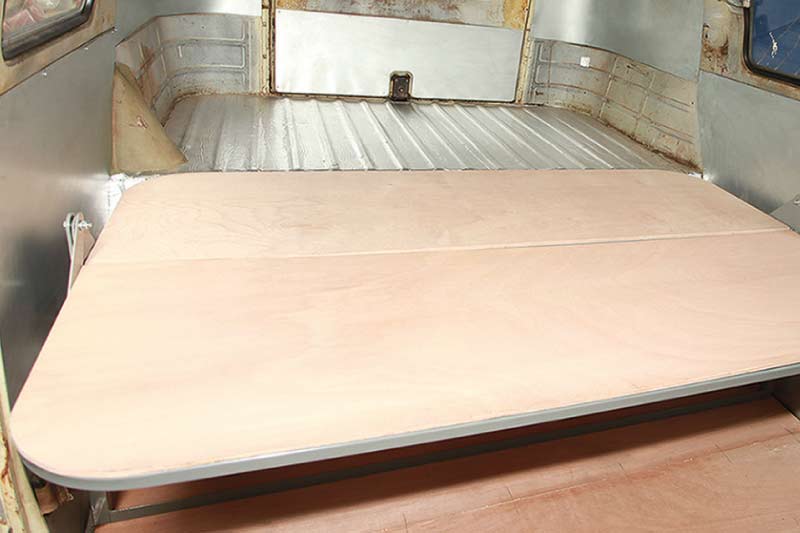
Step 21
Affix the boards to the frame using self-tapping screws. This ensures there’s nowhere for them to go when you’re thrashing about, or when raising and lowering the bed. Now simply add some good quality foam and upholstery of your choice and you’re done.
